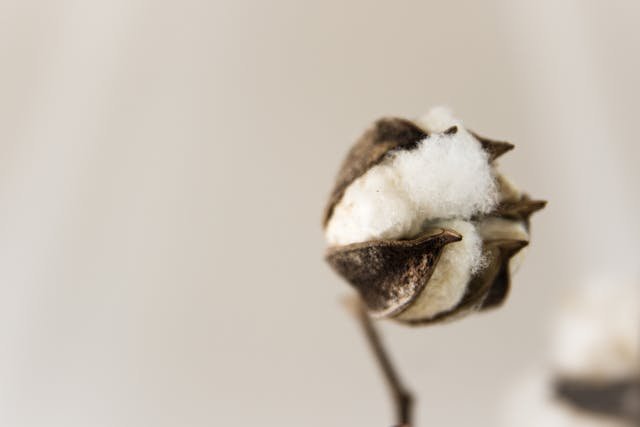Egyptian cotton is known as one of the finest and most luxurious types of cotton in the world, and it has a long and fascinating history that spans centuries and continents. From its humble origins in the Nile River Valley to its global fame and popularity, Egyptian bedsheets has gone through a remarkable journey that involves innovation, cultivation, trade, and fashion. In this article, we will explore the journey of Egyptian cotton from the field to the bedroom, and discover what makes it so spectacular and desirable. Let’s go!!!
The Origins of Egyptian Cotton
Egyptian cotton, scientifically known as Gossypium, traces its roots to the Nile Delta, where the combination of fertile soil, ample sunlight, and consistent humidity creates an ideal environment for its cultivation. The primary varieties of Egyptian cotton include Giza 45, Giza 88, and Giza 86, each known for its long staple fibers that contribute to the fabric’s superior quality. The long staple fibers, ranging from 1.5 to 2 inches, set Egyptian cotton apart from other varieties. This length results in a smoother and more durable fabric, making it a preferred choice for luxury linens. Additionally, the fibers’ thinness allows for a higher thread count, further enhancing the fabric’s softness and breathability.
The journey of Egyptian cotton begins in the vast cotton fields of Egypt, where farmers carefully select the best seeds for cultivation. These seeds are planted in late winter or early spring, and the plants require a consistent water supply and warm temperatures to thrive. The proximity to the Nile River ensures a steady water source for the cotton crops as the cotton plants undergo a meticulous growth and maturation process, typically taking around 180 to 200 days. During this period, farmers monitor the plants closely, ensuring proper irrigation, pest control, and nutrition. The delicate balance of these factors contributes to developing high-quality cotton fibers.
Harvesting is a critical stage in the journey of Egyptian cotton. Unlike mechanical harvesting used in some regions, Egyptian cotton is often handpicked to avoid damaging the fibers. This labor-intensive method ensures that only the mature cotton bolls are harvested, preserving the long and fine fibers that are characteristic of the premium quality cotton. Based on our research, cotton is known as one of the oldest and most versatile crops in the world, and it has been cultivated and used for various purposes since ancient times. However, not all cotton is the same, and different types of cotton have different characteristics and qualities. Egyptian cotton is a type of long-staple cotton, which means that it has longer and finer fibers than regular cotton. This results in smoother and stronger yarns that can be woven into high-quality fabrics that are soft, durable, and lustrous.
The Production of Egyptian Cotton
The production of Egyptian cotton involves several stages, from planting to harvesting to processing to manufacturing. Each stage requires careful attention and skill to ensure that the quality and purity of the cotton are maintained and enhanced. The planting of cotton usually takes place in April and May, when the soil is moist and fertile. According to our findings, the cotton seeds are sown in rows, about 30 to 40 centimeters apart, and they are watered and fertilized regularly. The cotton plants grow and develop for about four to five months, during which they produce flowers and bolls. The flowers are white at first, then turn yellow, then pink, and then fall off, leaving behind the bolls, which are the seed pods that contain the cotton fibers. The bolls mature and burst open, revealing the fluffy white cotton inside.
The harvesting of Egyptian cotton usually takes place in September and October, when the cotton is fully ripe and ready to be picked. The harvesting is done by hand, which is a labor-intensive and time-consuming process. Still, it ensures that the cotton fibers are not damaged or contaminated by any foreign materials. The cotton pickers carefully pluck the cotton from the bolls and place it in large baskets or sacks, which are then transported to the ginning factories.
The spinning of cotton is the process of turning the cotton fibers into yarns, which can be used to make fabrics. The spinning is done by machines, which twist and stretch the fibers into thin and continuous strands of yarn. The spinning machines can also combine different fibers to create different types of yarns, such as single-ply, double-ply, or multi-ply yarns, which have different thicknesses and strengths. The spun yarns are then wound onto spools or cones, which are ready to be sent to the weaving or knitting factories.
The Products of Egyptian Cotton
Egyptian cotton is used to make a wide range of products, from clothing to bedding to towels to home accessories, and more. Some of the most popular and famous products of Egyptian cotton that you can get at Pure Parima store are as follows:
Bedding
Egyptian cotton bedding is one of the most luxurious and comfortable bedding products in the world, and it can transform the bedroom into a cozy and stylish sanctuary. Egyptian cotton bedding includes sheets, pillowcases, duvet covers, comforters, blankets, and more, which come in different sizes, colors, patterns, fabrics, and styles, to suit every taste and preference. cotton bedding can also improve the sleep quality and health of the user, by providing softness, breathability, durability, and luster. If you’re thinking of where to get this bedding, Pure Parima is there for you to choose the right bedding for yourself.
Towels
Egyptian cotton towels are one of the most absorbent towels in the world, and they can make the bathroom into a spa-like retreat. cotton towels include bath towels, hand towels, face towels, bath mats, and more, which come in different sizes, colors, patterns, fabrics, and styles, to match every decor and mood. Egyptian cotton towels can also pamper the skin and hair of the user, by providing softness, breathability, durability, and luster.
Conclusion
Egyptian cotton is one of the most remarkable types of cotton in the world, and it has a fascinating journey that involves innovation, cultivation, trade, and fashion. From its origins in the Nile River Valley to its production, benefits, and products in the bedroom, bathroom, and wardrobe, Egyptian cotton has proven to be a versatile and valuable material that can provide comfort, luxury, and sophistication to the user. Egyptian cotton is truly a gift from nature and a treasure for humanity. Pure Parima stands out from other bedding companies by exclusively offering 100 percent certified Egyptian cotton sheets and duvet covers. Every product in their collection proudly carries the esteemed Cotton Egypt Association seal of approval, guaranteeing that your bedding meets the highest quality standards, providing you with peace of mind and luxurious comfort.




